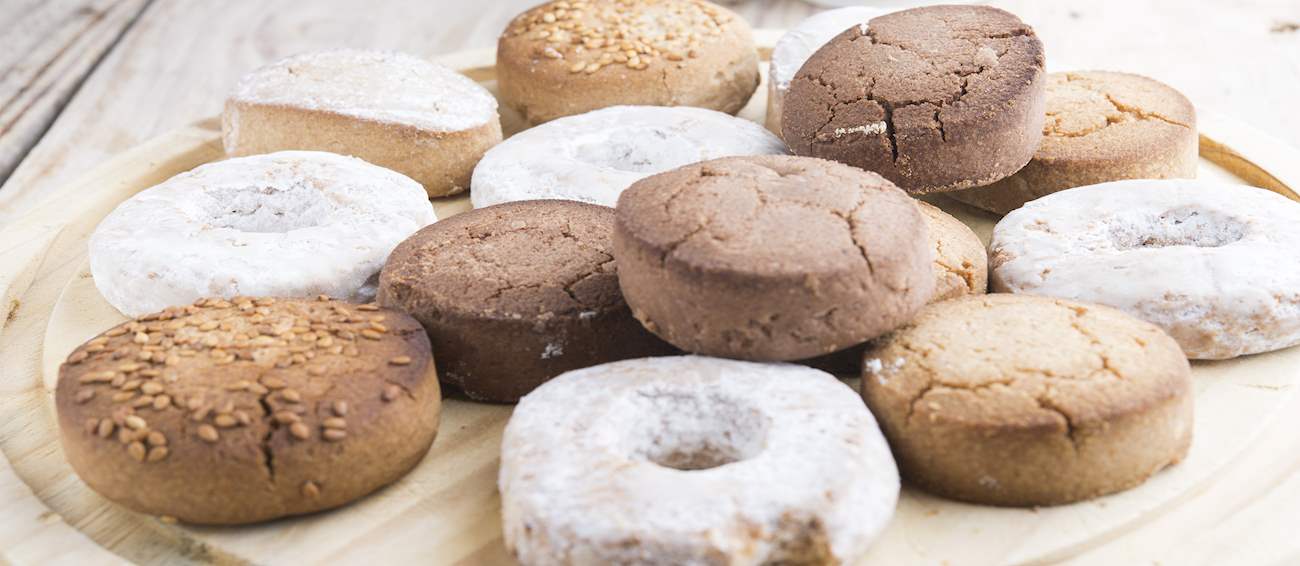Carquinyolis are traditional Catalan versions of biscotti, similar to the Tuscan cantuccini. They are made with a mixture of flour, eggs, sugar, and toasted almonds, and sometimes anise and lemon. The almonds used should be left unpeeled and soaked in water before being added to the mix.
The resulting biscuits, about 1 cm thick, are typically baked twice. Carquinyolis are served as a dessert, typically accompanied by a glass of sweet wine on the side. Variations on these biscuits, apart from the original cantuccini, also exist in Aragon, the Balearic Islands, Occitania, and Sicily.
Polvorón is a popular Spanish shortbread cookie consisting of flour, milk, sugar, lard, and toasted almonds. The name is derived from the Spanish word polvo, meaning powder, referring to their extremely crumbly and powdery texture.
The cookies are especially popular during the Christmas festivities. Apart from Spain, varieties of polvorónes are also quite popular in Cuba and the Philippines.
Neula is a Catalan biscuit consisting of flour, sugar, beaten egg whites, butter, and lemon juice. The biscuits are very light and thin, and they are typically rolled into hollow tubes. Neulas are traditionally consumed during the Christmas season, accompanied by a Catalan sparkling wine called cava.
The name neula is derived from the word nebula, meaning fog, referring to their delicate and light texture.
Almendrados are traditional Spanish cookies. They're made with a combination of blanched almonds, granulated sugar, eggs, and lemon zest. Egg whites are first beaten until stiff, then combined with sugar, egg yolks, lemon zest, and ground almonds.
The combination is spiced with cinnamon, if desired, and it's then shaped into mounds or pyramids and baked until golden. Dating back to the 15th century or before, almendrados are often made during the festive Christmas period as a tasty dessert or snack.
TasteAtlas food rankings are based on the ratings of the TasteAtlas audience, with a series of mechanisms that recognize real users and that ignore bot, nationalist or local patriotic ratings, and give additional value to the ratings of users that the system recognizes as knowledgeable. TasteAtlas Rankings should not be seen as the final global conclusion about food. Their purpose is to promote excellent local foods, instill pride in traditional dishes, and arouse curiosity about dishes you haven’t tried.



